
Crème Mousseline
Crème Mousseline, also known as German buttercream, is a fluffy and silky buttercream made of pastry cream and whipped butter. Use it to frost cakes and cupcakes or for European style tortes and pastries.
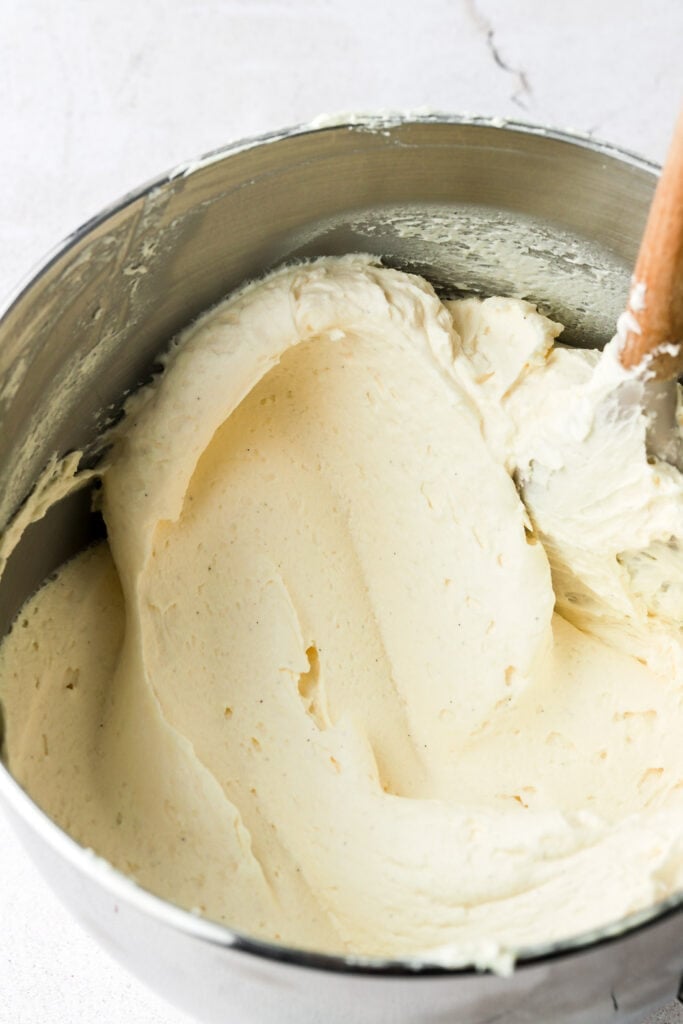
Why you’ll love crème mousseline
- It’s a buttercream that’s sturdy enough to pipe but so airy and mousse-like at the same time.
- It’s so flavorful considering it’s 2 parts pastry cream.
- Super versatile and so easy to infuse with different flavors.
I used this gorgeous cream in my Fraisier Cake and my Prinzregententorte, along with many recipes in my cookbook, Frosted.
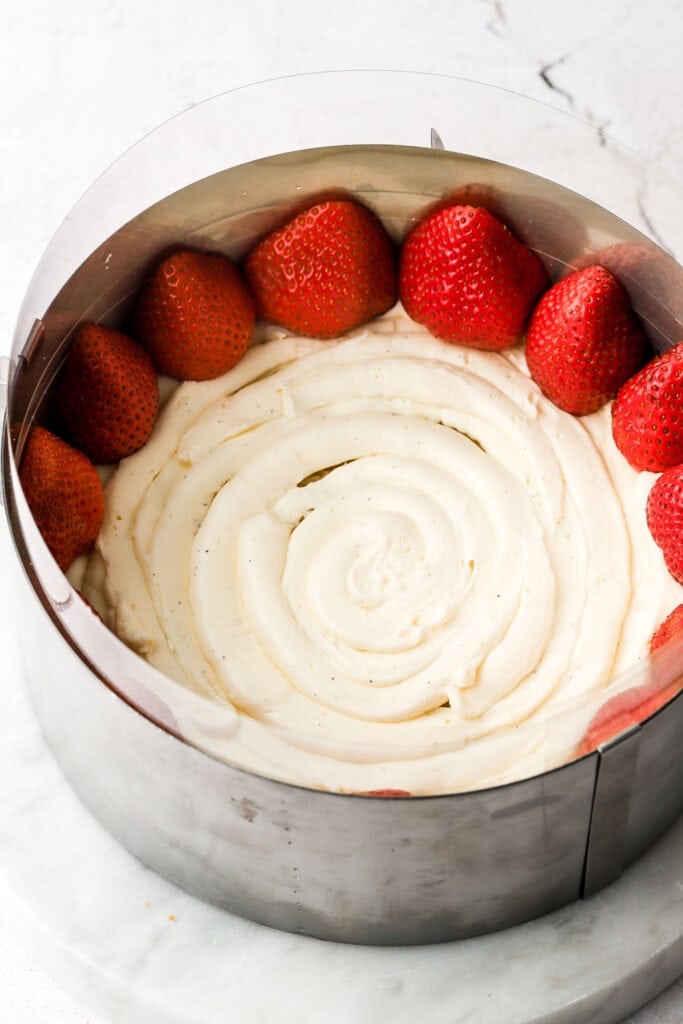
What is crème mousseline
Ohhhh the beloved crème mousseline. This guy gave me a headache and here’s why. Creme mousseline is also known as German Buttercream. If you have my cookbook, you’ll see that that recipe is different from this one. Both recipes are pastry cream that’s cooled and then beaten with butter.
That recipe works well as a buttercream. It holds up well, pipes well, can be flavored, etc. but the ratio of butter to pastry cream is higher than a traditional crème mousseline and I did not want to stuff a whole middle of a cake with buttercream in my fraisier cake… It just sounded so incredibly heavy and buttery so I made a new version.
To make it more of a creamy, “mousse” texture and not a buttercream texture, I did some more research and realized it should have 2 parts pastry cream and 1 part butter. This means that if my pastry cream weighs 400 grams, then I need 200 grams of butter.
I wanted to keep it a nice round number so I did 170 grams (3/4 cup or 1 1/2 sticks) of whipped butter since my pastry cream comes out to about 365 grams. It’s not exactly 2:1 but it’s close enough.
As for the actual pastry cream, I really did not want to use just egg yolks and be stuck with a ton of egg whites so I set out to make pastry cream that is able to use egg yolks or whole eggs. IT IS SO GOOD, I have a whole blog post on pastry cream and how to make it either way. Both versions work well for creme mousseline.
For more posts like this, make sure to check out my baking basics page. I have posts on creme diplomate (diplomat cream), Swiss meringue buttercream, french buttercream and more.
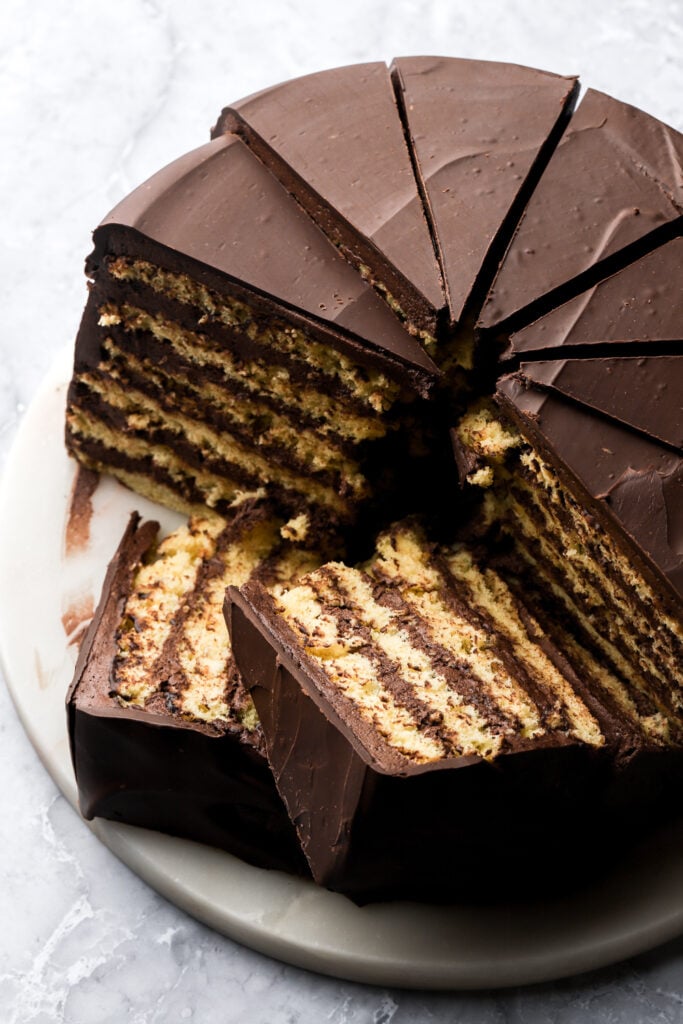
Ingredients
- Sugar: I used granulated sugar and this cream is not overly sweet so don’t cut the sugar. I haven’t tested it but I’m sure brown sugar would also work well.
- Cornstarch: the cornstarch will help thicken the pastry cream and set once it’s cooled.
- Eggs: There’s two ways to make this – using just egg yolks or using the whole egg.
- Milk: I generally use full-fat milk or at least 2% milk for this but any milk will work fine.
- Vanilla: See below for different flavor options but for vanilla, I like to use vanilla bean paste. Vanilla extract and vanilla beans also work, the higher the quality the better the flavor.
- Butter: I use unsalted butter for buttercreams. A higher quality butter will give a better flavor but a lower quality butter will result in a more white color if that’s what you’re looking for.
Step-by-Step Instructions
Step 1: Heat the milk in a medium saucepan over medium heat, just until it starts to steam and/or simmer, 1-2 minutes.
Step 2: Meanwhile, whisk together the eggs, sugar, cornstarch and salt in a medium bowl. Whisk well until the mixture is completely smooth and there are no lumps.
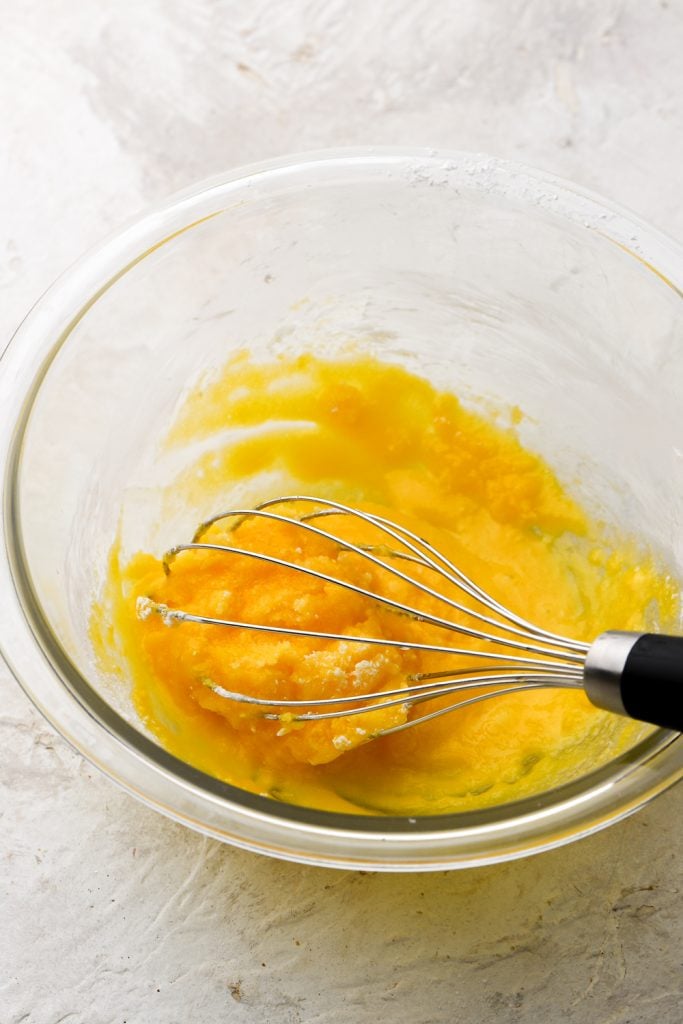
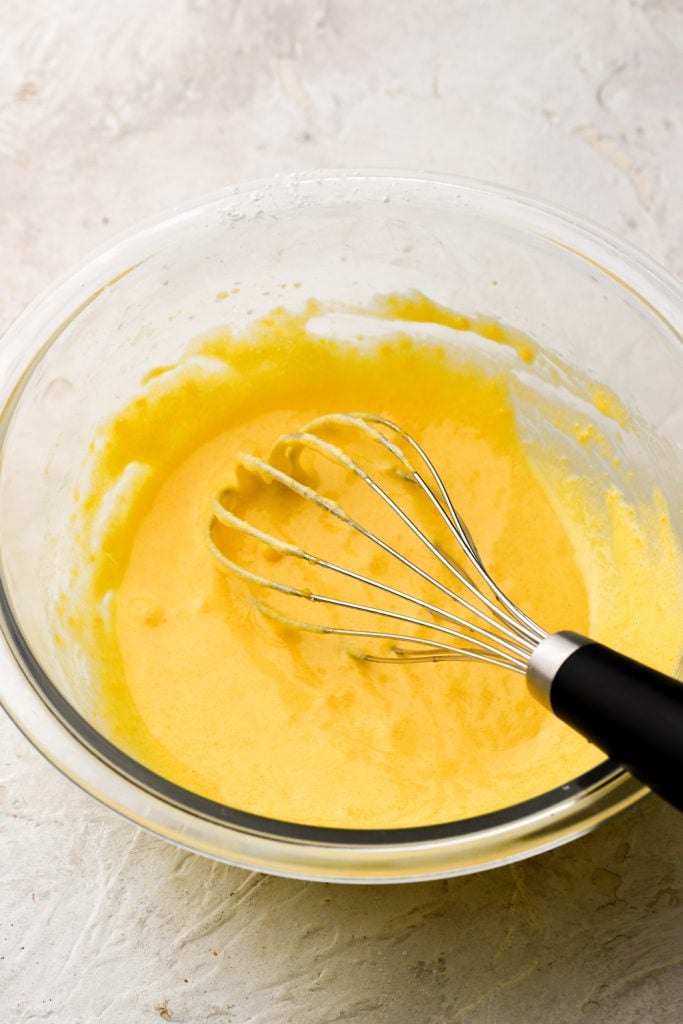
Step 3: Temper the eggs, by streaming the hot milk into the egg mixture while whisking the eggs. Pour the whole mixture back into the saucepan and whisk continuously over medium-low heat.
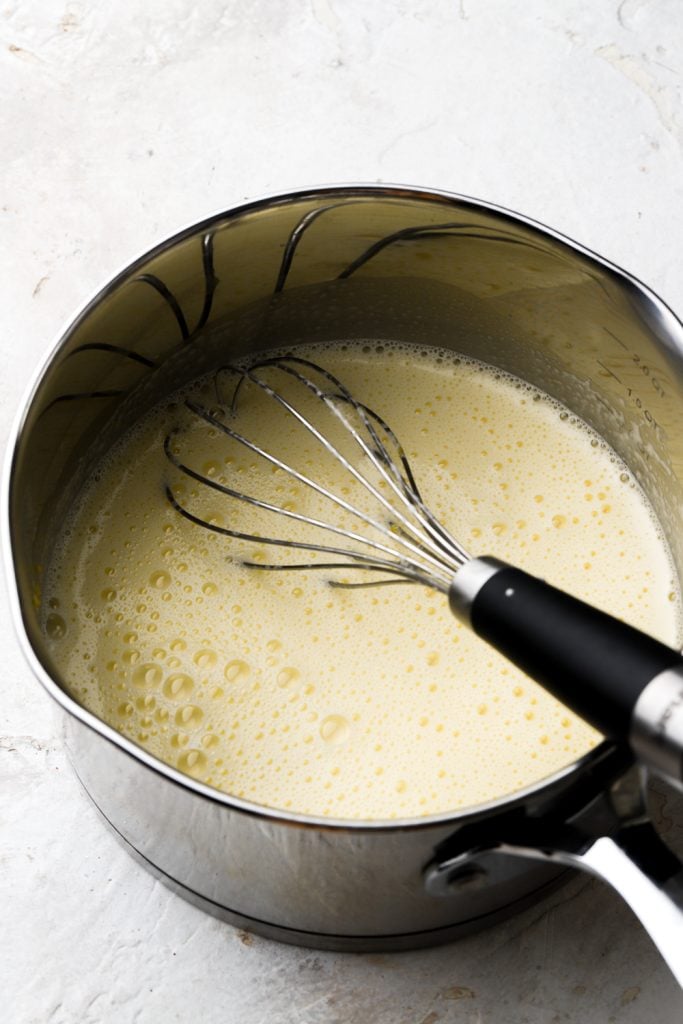
Step 4: The pastry cream will begin to thicken after about just 2-3 minutes. At this point whisk aggressively for another 30-60 seconds.
Step 5: Continue whisking while you remove the pan from heat and then pour it into a bowl. Give it another good whisk, making sure there are no lumps.
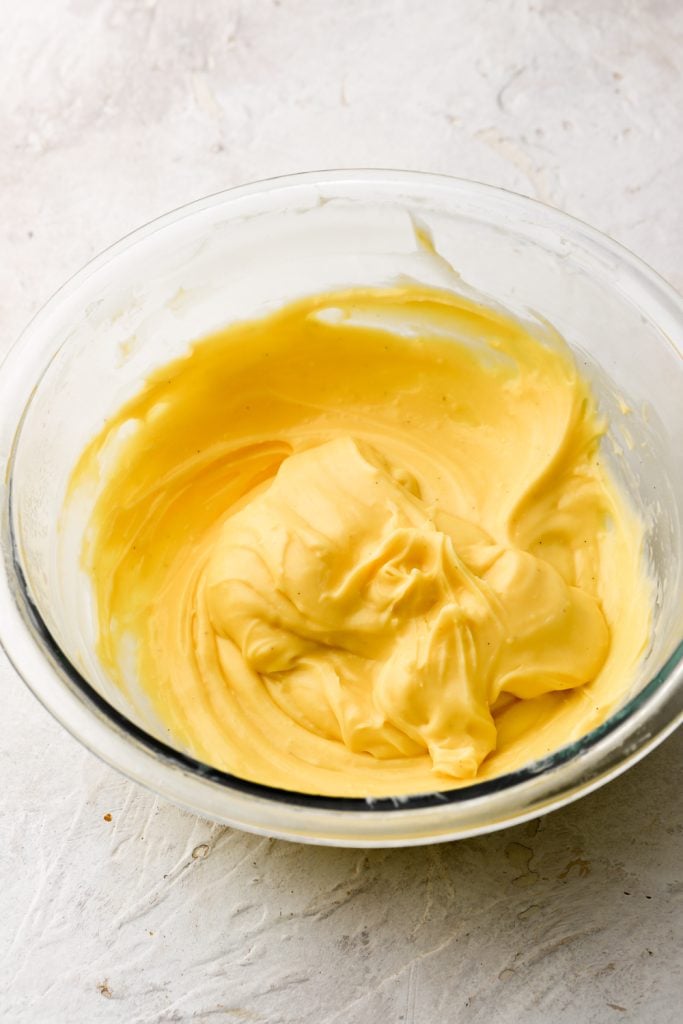
Step 6: Add the butter and vanilla and allow the heat from the pastry cream to melt the butter. It may separate at first but as you whisk, the pastry cream will come back together and should be smooth and silky.
*if you have any lumps, feel free to press the pastry cream through a sieve while it’s still warm.
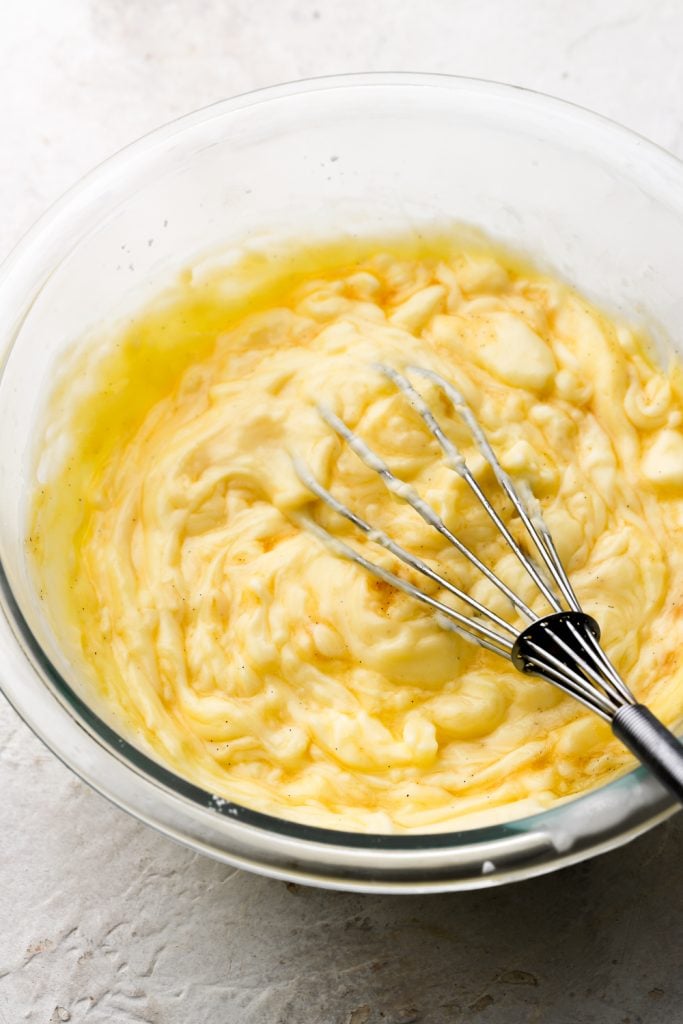

Step 7: Cover the surface of the pastry cream with plastic wrap and allow it to cool completely to room temperature. It can be refrigerated for a little but make sure to gently whisk it before using it so there are no lumps.

Step 8: Make the crème mousseline by beating the room temperature butter at full speed until it’s super pale and fluffy.

Step 9: Add in the chilled pastry cream in 4-5 batches, along with any flavorings, mixing well between each one. Fold the buttercream with a rubber spatula to smooth it out. Use as desired!

Whole eggs vs. egg yolks for the pastry cream
I really wanted to avoid wasting egg whites (or figuring out how to use them up elsewhere) so I decided to make my pastry cream with whole eggs. It turned out WONDERFUL however I think an egg yolk pastry cream is a little more flavorful. It’s also convenient to be able to make this with egg yolks if you have them leftover from another recipe.
To make the pastry with whole eggs – replace 3 egg yolks with 1 whole egg. This pastry cream may take a couple of minutes longer to thicken when cooking and will be less flavorful and a lighter color but still really good, especially with other flavors added in.
To make the pastry cream with just egg yolks, use three egg yolks instead of 1 whole egg. This version will have a more yellow color to it and is a little more flavorful.

How to flavor the buttercream
If you’re used to American buttercream and have never made a European buttercream, you’ll be surprised at how much they can hold. Instead of 1 tsp of vanilla, I usually do about 1 Tbsp per batch because you just can’t taste it as much as you can in American buttercream.
For one batch of buttercream I usually do:
- Vanilla: 2 tsp vanilla bean paste or 1 Tbsp of vanilla extract
- Almond or Lemon Extract: 1 tsp (same with anything equally as strong)
- Chocolate chips – melted: 1/2-1 cup (3-6oz), depending how strong you want it
- Cocoa powder – unsweetened: 1/2 cup (40g), you can go up to 3/4 cup (60g)
- Nut butters – creamy not natural kind: 1/2-1 cup, depending on how strong you want it
- Coffee: 1-2 tsp of espresso powder or 1-2 Tbsp of instant coffee dissolved in equal amounts of water
- Jam/Preserves: 1/2 cup, or slightly more if it’s not super runny
- Freeze dried fruit – ground: 1/4-1/2 cup; I recommend this over jam/preserves because it has a lower water content so it is less likely to break the buttercream and it has a stronger flavor and color.
If you have any other flavors you’re questioning, comment below and I’d be happy to give a recommendation.

How to use crème mousseline
Crème mousseline is German “buttercream” so it can be used in place of any other buttercream. It pipes well but it definitely has more air bubbles so it’s not the most ideal for decorating. It’s certainly sturdy enough to layer tall cakes but it’s not as stable as a Swiss Meringue buttercream or an Italian buttercream would be in the heat.
I used it to fill my Fraisier Cake and my Prinzregententorte but really it would be lovely on any type of cake.
It could be used to frost cupcakes, fill cookie sandwiches, brownies, etc.
Make sure to check out my cookbook Frosted for a million frosting options and how to use them! I also have an ebook, Frosted 2.0, that shows step-by-step photos of all the types of frostings in the cookbook plus a new favorite of mine. You can download that below.
Expert tips on getting the perfect cream
- Don’t swap ingredients unless I mentioned them in the ingredient section above.
- Don’t reduce the sugar in the cream.
- Weigh the ingredients with a digital scale.
- Use fresh when it’s made for the best results.
Frequently Asked Questions
You can! I recommend using the egg yolk pastry cream version and using just dairy free milk (no cream) and then using dairy free butter. You can also do it with the whole egg pastry cream but you’ll have to find a dairy free cream that doesn’t taste like coconut lol.
I don’t like to make buttercream ahead of time in general but it can be done.
You can make crème mousseline ahead of time. If it’s over one night, it can sit at room temperature before frosting a cake. If it’s longer, I would refrigerate it and bring it back to room temperature (maybe re-whip it if it doesn’t look as smooth as it did).
How to store a crème mousseline?
Crème Mousseline is best used fresh but if you have any left over you can cover it and store it in the fridge for 1-2 days, or freeze for a couple of months.
Then bring it back to room temperature before using and re-whip it a little to give it a little more volume again.
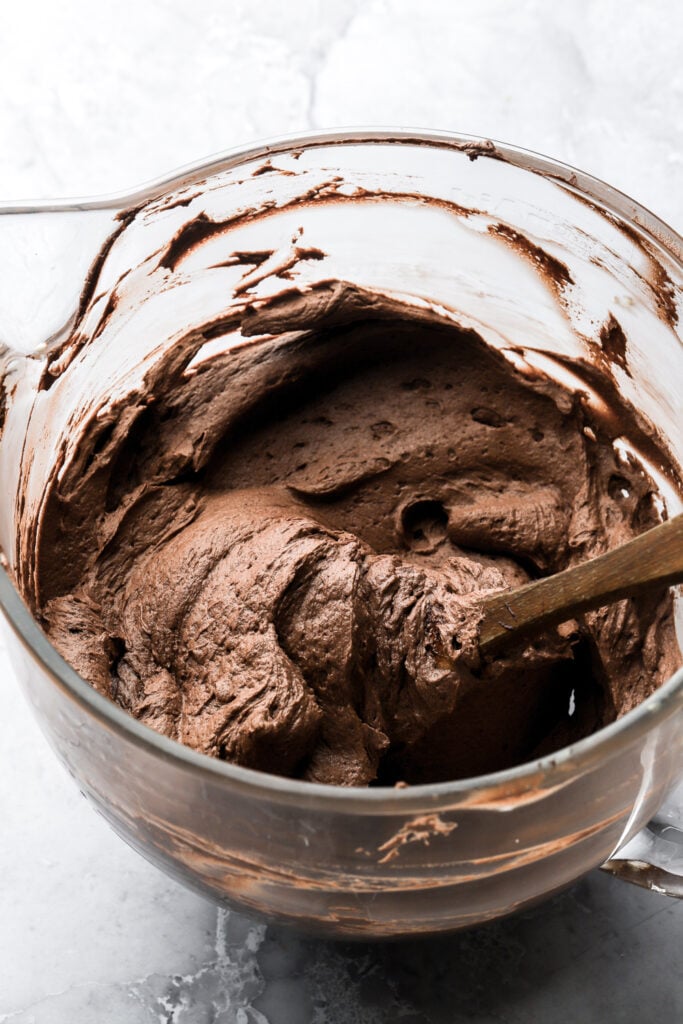
Thanks so much for reading today’s post, if you have any questions just comment down below.
If you make this crème mousseline, I’d love it if you left a star rating for me. If it’s less than five stars, please leave a comment with the rating so I know why! 🙂
As always, have a blessed day and happy baking!
Love, B

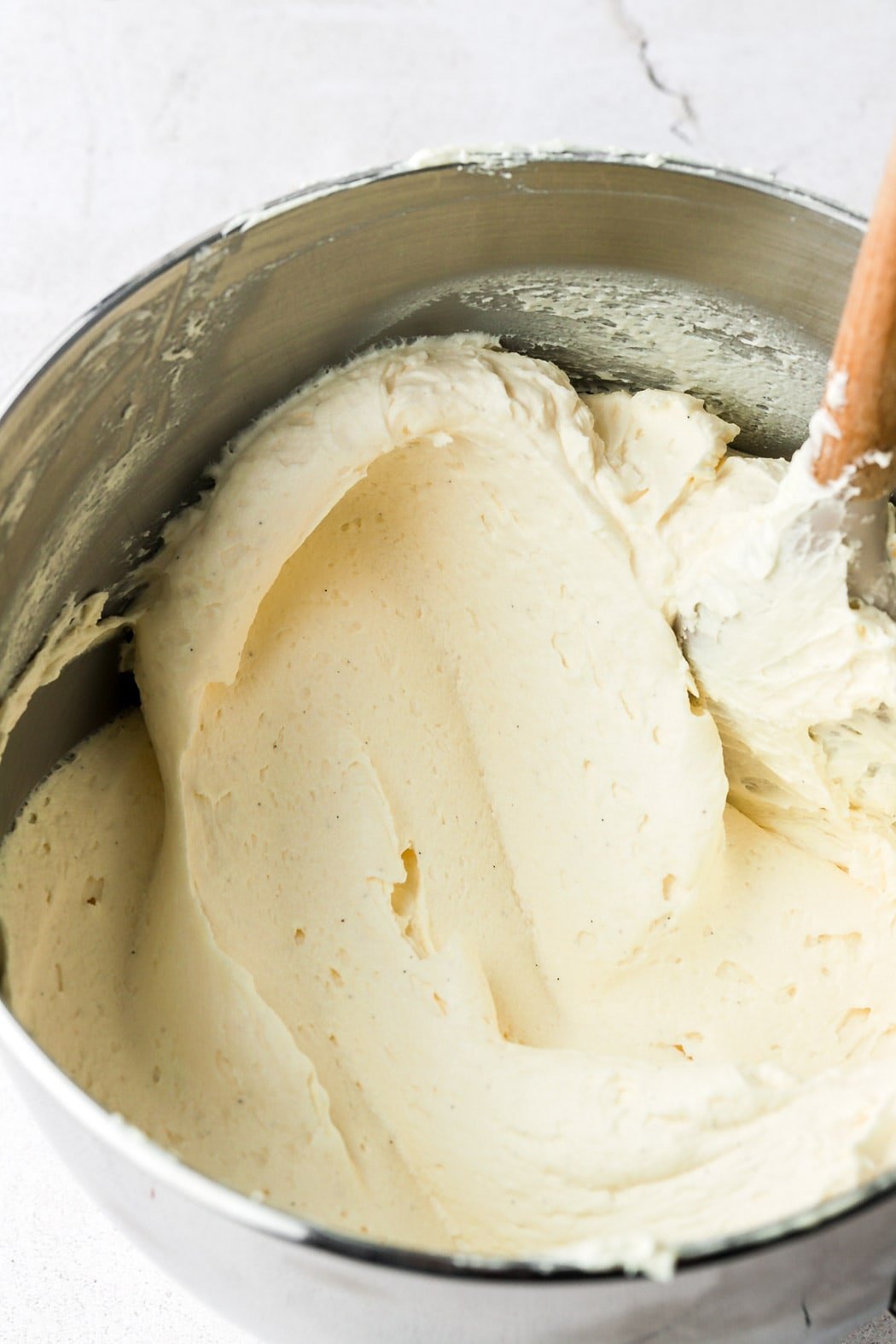
How can you make this recipe a Strawberry Mousseline
The most effective way would be to add freeze dried strawberries. They add the most flavor and color without adding moisture, I just put them in a food processor until they’re powdery and add them in at the end, mixing until it’s well combined.
Alternatively you could also make a strawberry reduction (linked below).
I would just add in a couple of Tbsp at a time (of either), mix it, see how it tastes/looks and if you need more.
https://baranbakery.com/strawberry-cupcakes/
Strawberry extract is always an option well – start with just 1/2-1 tsp.
Thank you for all of your wisdom and expertise Bernice! This is a great recipe and you have laid it out so well with pics and tips. A question: what type of viscosity should the pastry cream have right after pulling off heat AND how “liquid” should it be after it chills to room temp?
Hi Randy, when it comes off the stove, it’s quite thick like a pudding, you can see the photo in the step-by-step section so it will be even thicker once it has cooled. It should not be liquidy at all.
Just made it and absolutely delicious. I was nervous only using one egg (since I normally use yokes and i hate wasting egg whites), but this recipe is amazing! Totally agree that you can’t taste the different. Thank you!
would this be good in a cream puff? or maybe an eclair
Hi Olivia, it really depends what texture you’re looking for. This is closer to a buttercream texture, it hardens in the refrigerator so if that’s what you’re looking for then it def could work. If you like a more whipped cream texture, something light and fluffy then I recommend a diplomat cream. I’ll have a recipe for that one soon too 🙂